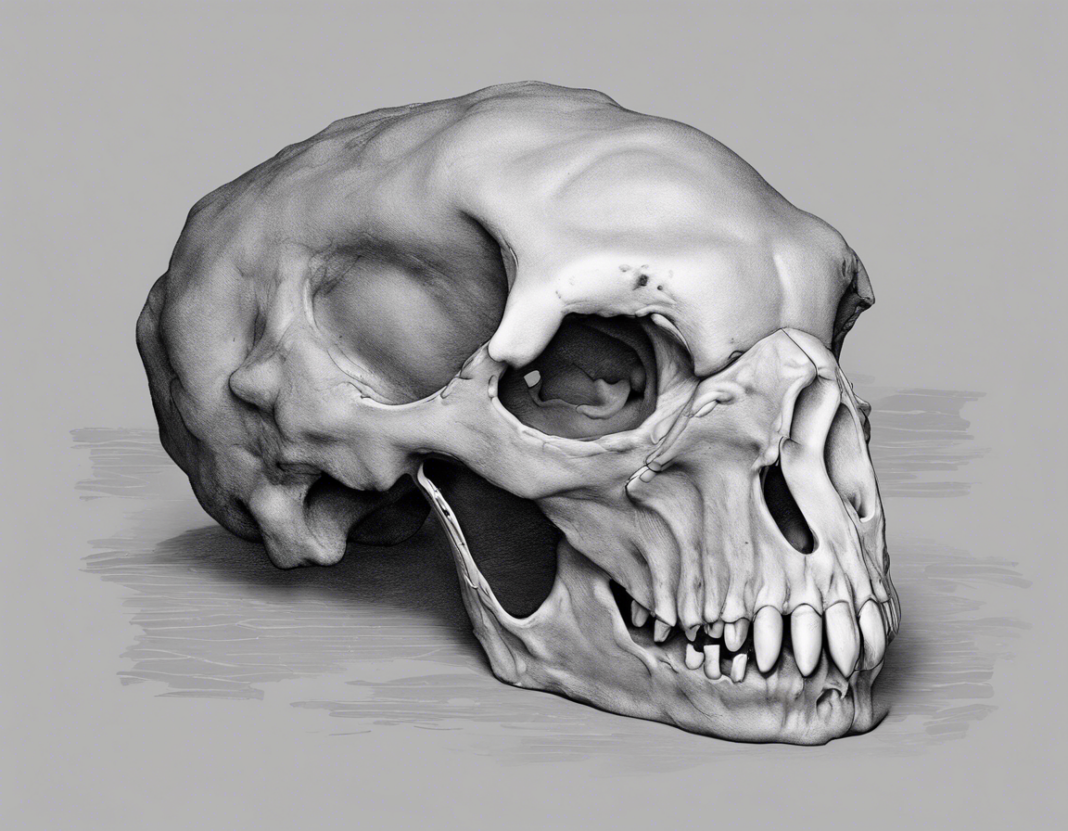The anatomy of a mole skull is truly a marvel of nature. Moles are fascinating creatures known for their underground lifestyle and unique adaptations for burrowing. Their skulls have evolved over time to suit their subterranean way of life, making them a subject of great interest for biologists and anatomists alike. In this comprehensive guide, we will delve deep into the intricate details of a mole skull, exploring its features, functions, and evolutionary significance.
I. Introduction to Moles
Moles are small, burrowing mammals belonging to the family Talpidae. They are widely distributed across various habitats, from grasslands to forests, but are most commonly associated with digging underground tunnels. Moles have cylindrical bodies, powerful forelimbs equipped with large claws, and a highly specialized skull that enables them to thrive in their subterranean environment.
II. External Features of a Mole Skull
- Size and Shape: A mole skull is relatively small and compact compared to its body size. It is elongated and dorsoventrally flattened, allowing it to navigate through narrow tunnels with ease.
- Dentition: Moles have a set of sharp, pointed teeth adapted for feeding on invertebrates like worms, insects, and larvae. Their dental formula typically consists of incisors, canines, premolars, and molars.
- Orbital Openings: The eye sockets, or orbits, in a mole skull are reduced in size since moles have poor eyesight and rely more on their other senses, such as touch and smell, to navigate underground.
- Nasal Openings: The nostrils of a mole are located on the dorsal side of the snout and can be sealed shut to prevent soil from entering while burrowing.
- Sagittal Crest: Some species of moles possess a prominent sagittal crest on the skull, which serves as an attachment site for powerful jaw muscles used for digging.
III. Internal Structures of a Mole Skull
- Braincase: The braincase of a mole skull houses the brain and is relatively small compared to other mammals of similar size. This is because moles do not rely heavily on complex cognitive functions.
- Auditory System: Moles have well-developed auditory structures, including a specialized middle ear adapted for detecting vibrations in the soil. This allows them to locate prey and navigate underground tunnels with precision.
- Olfactory Bulb: The olfactory bulb in a mole skull is highly developed, reflecting the importance of scent in their foraging behavior. Moles have a keen sense of smell that helps them locate food sources underground.
- Mandible: The lower jaw, or mandible, of a mole skull is robust and muscular, enabling powerful biting and digging movements. The mandible articulates with the skull at the temporomandibular joint, allowing for efficient chewing.
IV. Adaptations for Burrowing
- Strong Jaw Muscles: Moles have exceptionally strong jaw muscles attached to their skull, allowing them to exert powerful biting forces needed for digging through compacted soil.
- Specialized Forelimbs: The forelimbs of moles are short and stocky, with large, shovel-like claws adapted for excavating tunnels. These claws can be rotated to facilitate forward and backward movement in tight spaces.
- Fused Vertebrae: Moles have a unique adaptation where the vertebrae in their neck are fused together, providing stability and strength for pushing through soil while tunneling.
- Reduced Eyesight: Moles have tiny eyes and underdeveloped visual acuity since they spend most of their lives underground. Their reduced reliance on vision is compensated by highly sensitive tactile hairs on their snout and forelimbs.
V. Evolutionary Significance of Mole Skull Anatomy
- Convergent Evolution: The anatomy of a mole skull showcases remarkable convergent evolution with other burrowing mammals like gophers, anteaters, and armadillos. This phenomenon highlights the similar selective pressures that have shaped their adaptations for underground lifestyles.
- Ecological Niche: The specialized features of a mole skull reflect the unique ecological niche that moles occupy as fossorial mammals. Their skull anatomy has evolved to maximize efficiency in tunneling, foraging, and predator avoidance in subterranean habitats.
- Selective Pressures: Natural selection has played a crucial role in shaping the skull anatomy of moles, favoring traits that enhance their burrowing abilities and survival underground. Adaptations like strong jaws, sensitive whiskers, and specialized teeth have evolved to meet the challenges of their environment.
VI. Conclusion
In conclusion, the anatomy of a mole skull is a testament to the remarkable adaptations that animals undergo to thrive in diverse habitats. The unique features of a mole skull, from its specialized dentition to powerful jaw muscles, highlight the evolutionary success of these underground dwellers. By unraveling the intricacies of mole skull anatomy, we gain valuable insights into the fascinating world of burrowing mammals and the complex interplay between form and function in nature.
Frequently Asked Questions (FAQs)
1. How does a mole’s skull differ from that of other mammals?
Moles have skulls that are highly specialized for burrowing, with features like strong jaw muscles, shovel-like claws, and reduced eyesight that set them apart from other mammals.
2. What is the purpose of the sagittal crest in a mole skull?
The sagittal crest in some mole species serves as an attachment site for powerful jaw muscles, enabling them to exert the force needed for digging through soil.
3. Why do moles have poor eyesight?
Moles have adapted to their subterranean lifestyle by relying more on their sense of touch and smell rather than vision. Their reduced eyesight is an evolutionary trade-off for enhanced sensory abilities underground.
4. How do moles use their sense of smell to navigate underground?
Moles have a keen sense of smell and use it to locate food, identify predators, and navigate through their intricate tunnel systems in the dark.
5. Are all mole skulls structured the same way, or are there variations among different mole species?
While the basic features of a mole skull are consistent across species, there can be variations in size, shape, and specific adaptations based on the ecological niche and evolutionary history of each mole species.

